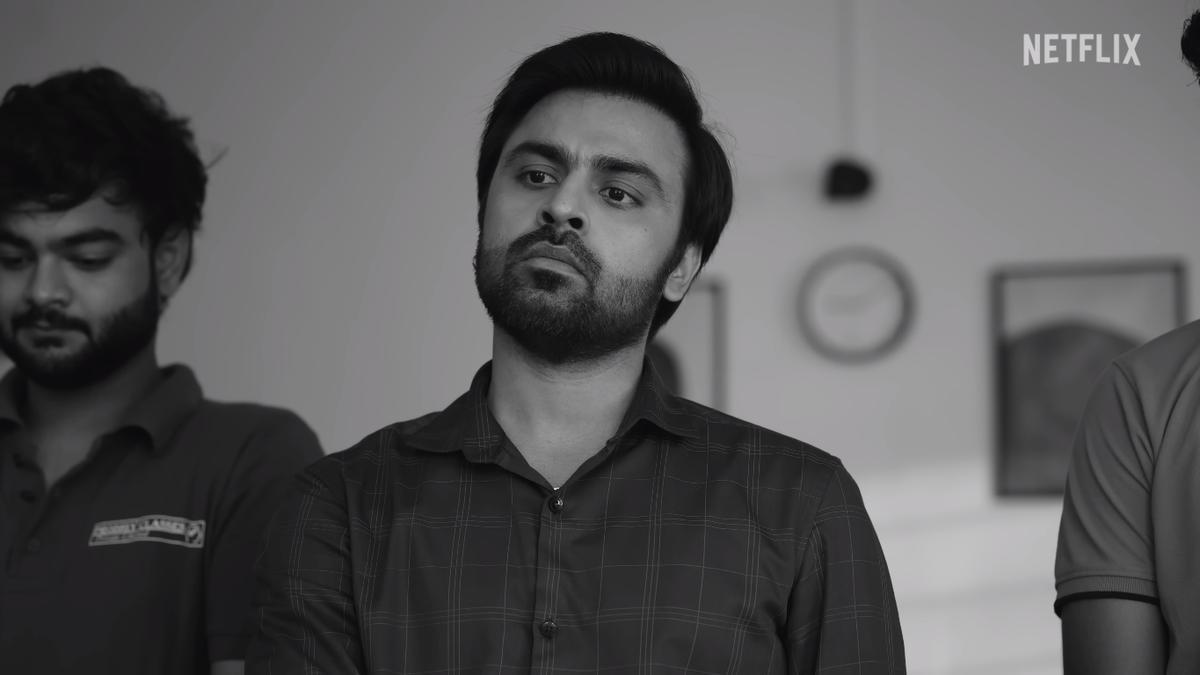
“Kota Factory” Season 3 arrives at a critical juncture, streaming at a time when the utility and ethics of coaching hubs are increasingly under scrutiny. This black-and-white series, celebrated for its stark portrayal of the student experience in Kota, continues to employ a somewhat rosy perspective in its latest installment. Though it thrusts the harsh pressures placed on students into the spotlight, attributing it primarily to the distorted demand and supply landscape — where the number of seats is drastically outnumbered by aspirants — it nevertheless romanticizes the “factory” model. This model rigorously drives 15-16-year-olds through grueling routines, ushering them into a relentless race to secure spots in engineering and medical colleges.
In an indirect manner, the series claims that Kota holds a pioneering position in this educational race. It concedes that while Kota’s ecosystem might have become mechanized over time, other coaching centers are quickly following suit. The creators seem content not to disrupt this process sensibly but rather to endorse it, much like seasoned politicians seeking re-election by promising a marginally improved status quo. This strategy is designed to appeal to their main audience—impressionable students and their anxious parents—by suggesting that minor tweaks can keep the coaching business efficient and students on track.
The series skirts around an important debate: whether coaching centers should equally prioritize all students or focus solely on potential top-rankers. This debate fails to address the critical financial aspects sustaining these institutions. The real driving force behind any “factory” is volume, yet the show veils this reality under the pretext of celebrating rigorous academic preparation.
Similarly, the show glosses over the severe issue of board exams clashing with competitive tests, ignoring the pivotal role of school education in preparing students for such challenges. It avoids delving into why teenagers feel compelled to migrate to Kota, chasing what the series refers to as an “aim” rather than a dream. Instead, it presents an oversimplified narrative, almost like a promotional piece on how coaching centers also prepare students for their board exams. Throughout, viewers might feel like they are solving a problem where both the assertion and reasoning are correct but the reasoning doesn’t sufficiently explain the assertion.
However, for those seeking a comprehensive, templated experience akin to other popular series such as “Panchayat,” “Mamla Legal Hai,” and “Aspirants,” “Kota Factory” doesn’t disappoint. The series is created by Raghav Subbu and directed by Pratish Mehta. In its five-episode third season, it introduces fresh topical questions like the perennial IPL vs.
. IIT debate that sparks lively dinner table discussions. It also touches upon the financial struggles rural students face and the additional emotional pressures of balancing romance with rigorous preparation. The writers tackle these dilemmas as if they were multi-choice questions from past examinations. Despite this formulaic approach, the show provides moments of reflection and subdued humor, particularly for those nostalgic about the intense problems at its core. Sharp editing ensures the episodes are concise, and the dialogues remain relatable.
This season also offers a compelling character arc for Jeetu, who finds himself grappling with the aftermath of a traumatic event from the last season. He is torn between maintaining professional boundaries and becoming a more brotherly figure to his students.
A notable improvement this season is that Jeetu Bhaiya is not the sole problem-solver. Other teachers are featured addressing these issues, each in their style. Tillotama Shome enriches the narrative as chemistry teacher Pooja, who is expected to play a significant role in future seasons. Rajesh Kumar’s portrayal of pragmatic mathematics teacher Gagan Rastogi adds an interesting contrast to Jeetu’s character.
Jitendra Kumar’s acting, while somewhat repetitive, continues to be endearing due to his sincerity. The young cast, particularly Ranjan Raj as Balmukund Meena and Ahsaas Channa as Shivangi, deliver heartfelt performances. Raj stands out as a boy struggling to uphold his values amidst numerous temptations. Mayur More effectively portrays the dichotomy of confidence and vulnerability in Vaibhav, and Revathi Pillai’s character arc provides her room to shine.
The most commendable aspect of Season 3 is its effort to place teachers at the center of educational policymaking. While still a work in progress, the show hints at a hopeful future where the system becomes less mechanical and more empathetic.
“Kota Factory” Season 3 is available for streaming on Netflix, continuing to explore the intricate realities of India’s coaching centers.












